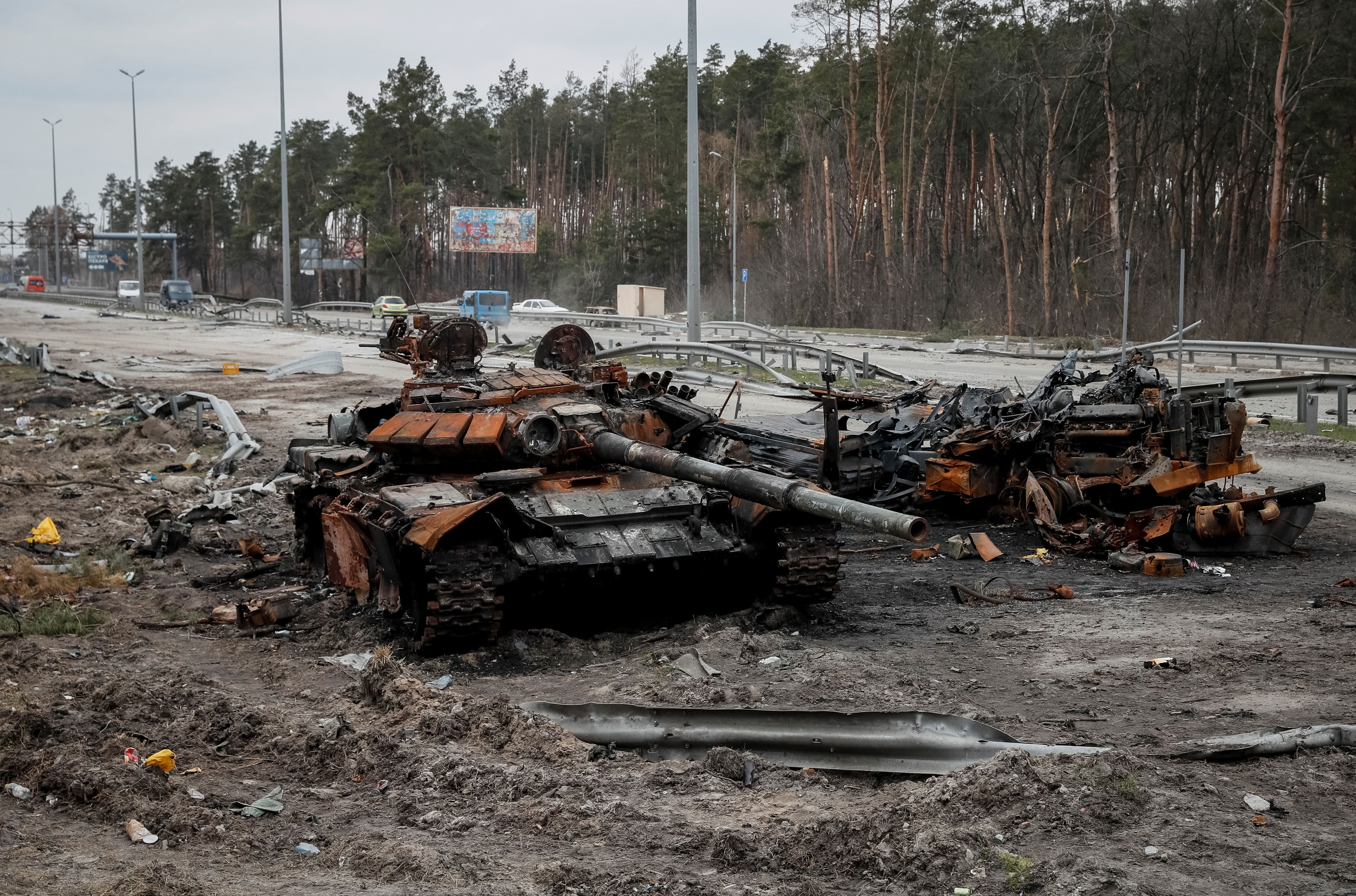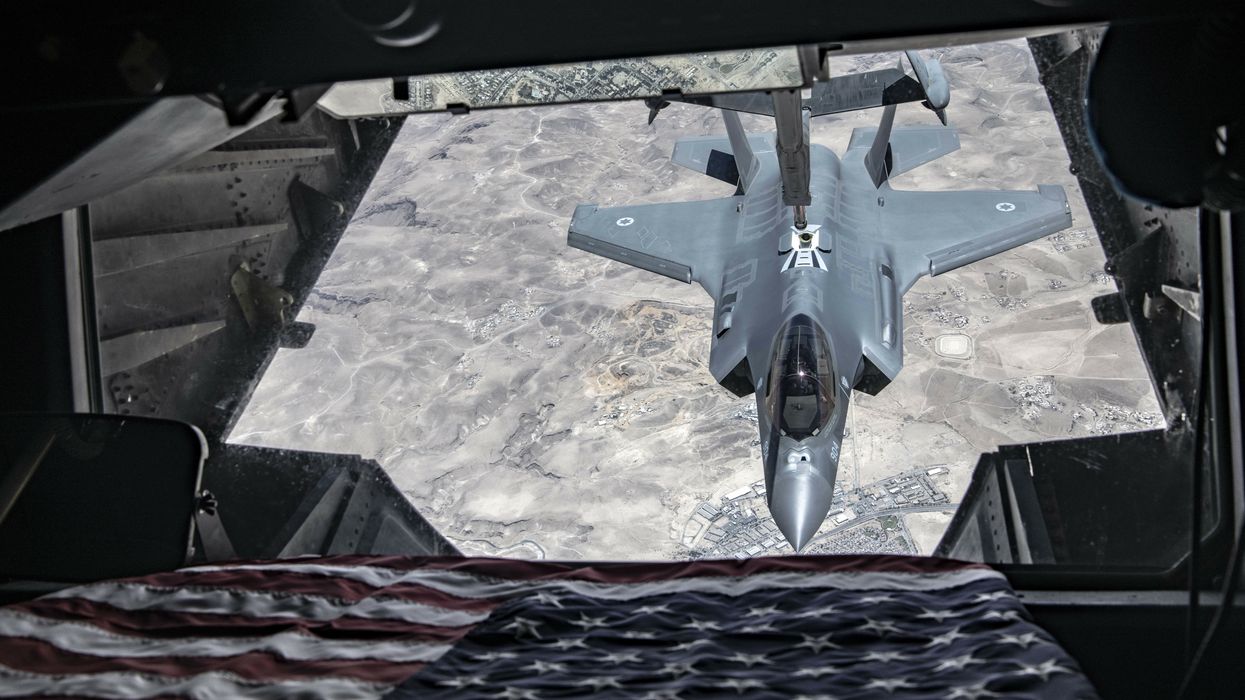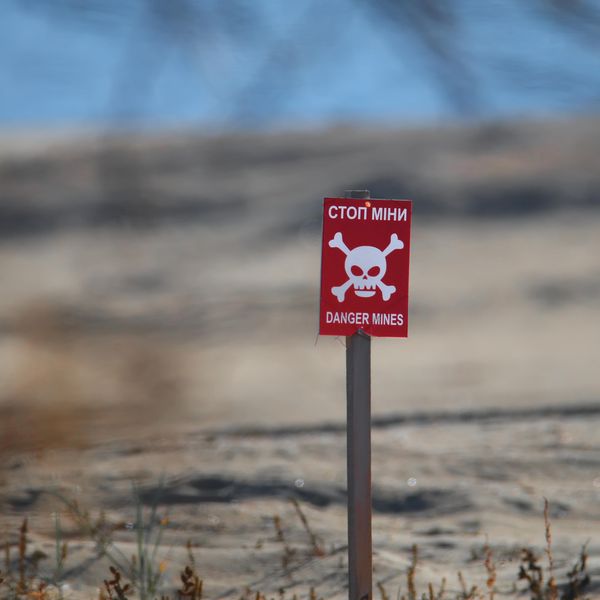The Biden administration’s Ukraine policy, though it lacks a coherent strategy, is at least centered on an explicit guiding principle: Russia must not be allowed to win in Ukraine. This sentiment is widely shared by U.S. allies across the Atlantic. "I have a clear strategic objective,” said French President Emmanuel Macron in a recent interview. “Russia cannot win in Ukraine.”
But, even in this consensus position, there is a major fly in the ointment: there has not been enough serious consideration of what a Russian victory in Ukraine would look like. The discussion has, instead, centered on alarmist predictions that obfuscate more than they reveal about Russian intentions and capabilities. “Who can pretend that Russia will stop there? What security will there be for the other neighboring countries, Moldova, Romania, Poland, Lithuania and the others?” said Macron, echoing the unfounded narrative that Russia’s ultimate goal is to attack NATO states.
While it is true that Russia’s victory in this war broadly contradicts U.S. interests, a closer look at Moscow’s possible endgame scenarios in Ukraine reveals that total victory — even if it were possible — is not in Russia’s interests and is probably no longer expected or desired by the Russian leadership.
Moscow, according to Western officials, can win this war simply by defeating Ukraine’s Armed Forces (AFU) on the battlefield. At first blush, it seems like a reasonable enough interpretation of a belligerent state’s wartime objectives, but this simplistic framing of the conflict quickly falls apart upon further examination.
What would really happen if the AFU’s lines collapsed — a prospect that, though not yet imminent, appears increasingly less distant by the day — and Russian forces found themselves in a position to steamroll Ukraine?
Even if Ukrainian forces are conclusively routed on the frontlines, besieging such Ukrainian strongholds as Kharkiv and Zaporizhia — let alone Kyiv and Odessa — will prove immensely taxing. Months of drawn-out fighting over the much less significant cities of Mariupol and Bakhmut offer a small, yet nonetheless harrowing preview of what these sieges would entail.
Occupying all of Ukraine would be prohibitively expensive for Russia even in the short term, let alone for a prolonged or indefinite period. The West would likely do its best to dial up these costs by funding and coordinating partisan activities all across Ukraine, but especially in the country’s western half. There is, after all, ample historical precedent for such activity in the form of the Ukrainian Insurgent Army, which resisted Soviet authorities for up to five years following the end of World War II.
Prior to Russia’s invasion, commentators urged Western leaders to turn this conflict into “Putin’s Afghanistan,” with Ukrainian partisans playing the role of 1980s mujahideen fighters. These suggestions were tabled because the Ukrainian government did not, in fact, collapse in the fateful weeks following the invasion, but it remains the case that any Russian attempt to control all of Ukraine would likely precipitate a prolonged insurgency campaign and incur terrible costs as a result.
Ukraine’s collapse likewise amplifies the risks of a direct clash between Russia and the West. The establishment of a de facto boundary between eastern Poland and Russian-occupied western Ukraine would create a dangerous flashpoint that, in the absence of meaningful deconfliction channels, could erupt in a shooting war on NATO’s eastern flank.
Nor would such a war necessarily be inadvertent on the part of the West; a total Ukrainian collapse would likely spark calls among the Baltic states and at least several major European powers for direct Western intervention on the ground, whether in the form of a NATO expeditionary force or a coalition of the willing drawn up from individual NATO members. Macron has openly and repeatedly stated that the West should not rule out an intervention along these lines; though his proposal was soundly rejected by the U.S. and Germany, it can be expected that political pressure to “do something” to stop Russia will build in Europe and the United States if Kyiv’s defeat becomes imminent.
The Kremlin is well aware that it cannot unilaterally achieve its wartime goals no matter how well it does on the battlefield. Indeed, its goals extend well beyond Ukraine, though not quite in the way that Macron and the Biden administration believe. There is no evidence that Moscow has any intention of launching wars of conquest against Poland, the Baltics, or other NATO states, but it is certainly seeking to extract a host of strategic concessions from the U.S. and its allies in areas including prohibitions against eastward NATO expansion and limitations on force deployments along NATO’s eastern flank.
The war that Russia is waging in Ukraine is thus a proxy for the Kremlin’s larger coercive strategy against the West, though it is not at all clear that conquering Ukraine will bring Moscow any closer to getting its desired concessions. The AFU’s collapse would certainly induce a state of panic in Western capitals. Yet it is difficult to see how this panic can be translated into a concrete willingness by the Biden administration and other Western leaders to strike the kind of grand security bargain Moscow seeks.
In fact, considering how politically invested current Western governments are in Ukraine’s war effort, there is a chance that Ukrainian collapse could produce the opposite reaction and render Western leaders even less likely to enter into substantive talks with Moscow.
Simply put, Russia has little to gain and much to lose by “winning” in Ukraine, if winning is defined as occupying the entire country. Instead, Russia’s incentive is to use its growing advantages as a lever for negotiating with the West. The Kremlin, in light of these conditions, has previously hinted at establishing demilitarized buffer zones in Ukraine that are not under Russian control.
Regardless of what happens on the battlefield in coming weeks and months, Moscow has started something it cannot unilaterally finish. This gives the U.S. tremendous inherent leverage in shaping the outlines of war termination — Washington and its allies should use it now to bring an end to this war on the best possible terms for the West as well as Ukraine.
- Ukraine War is great for the portfolio, as defense stocks enjoy a banner year ›
- ISW: Defeatist propaganda keeping ‘us’ from a Ukraine military victory ›
- Ukraine war ceasefire may require accepting a partition ›
- Imminent Ukrainian ascension to NATO unlikely, despite ‘victory plan’ | Responsible Statecraft ›
- Putin and Zelenskyy claim that the other is not ready to negotiate | Responsible Statecraft ›
- How NATO military doctrine failed Ukraine on the battlefield | Responsible Statecraft ›
















